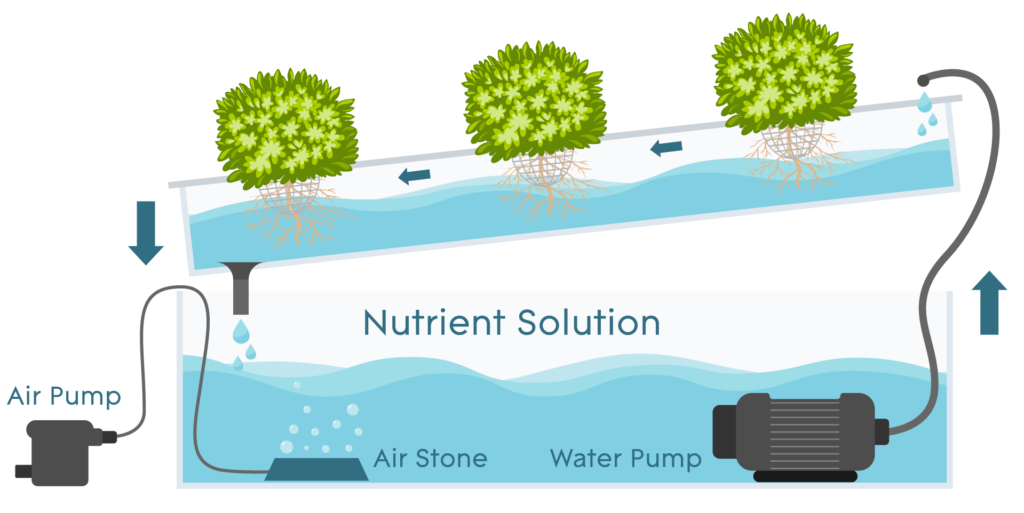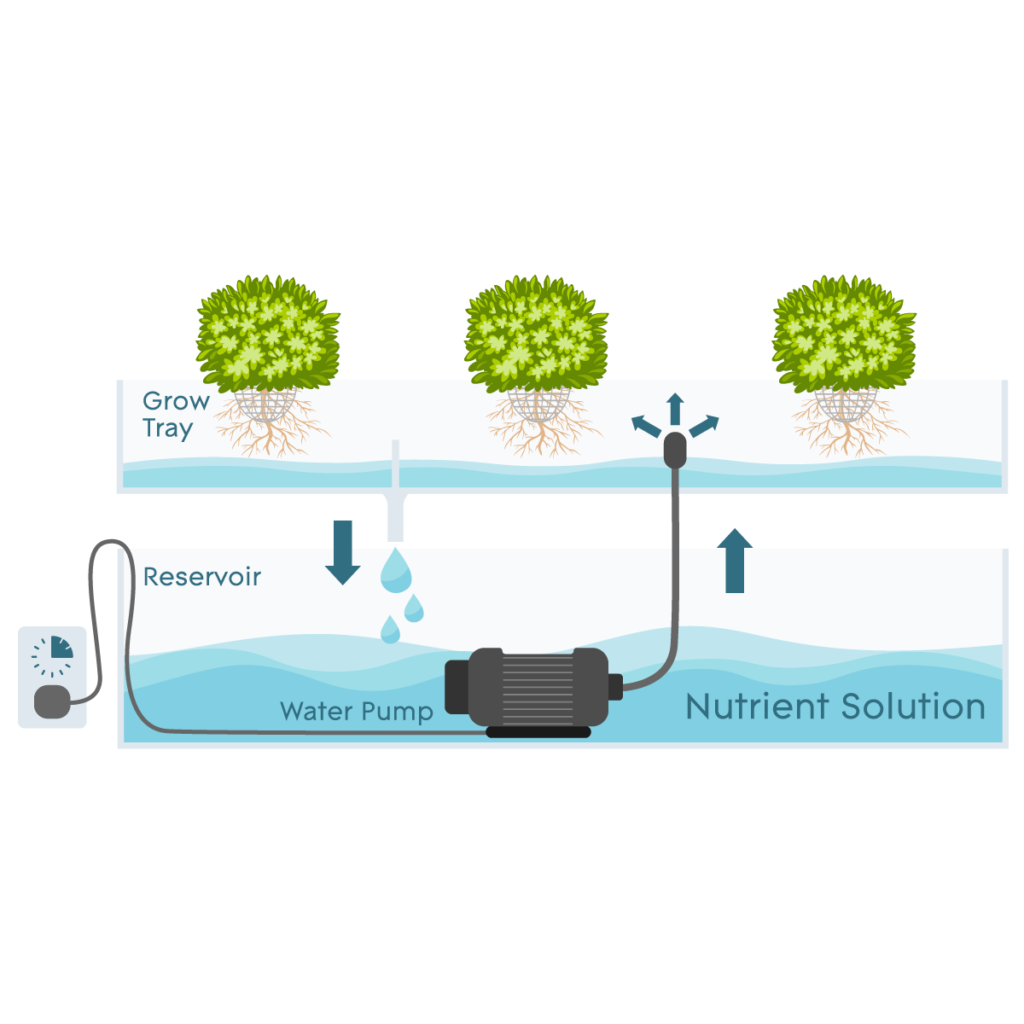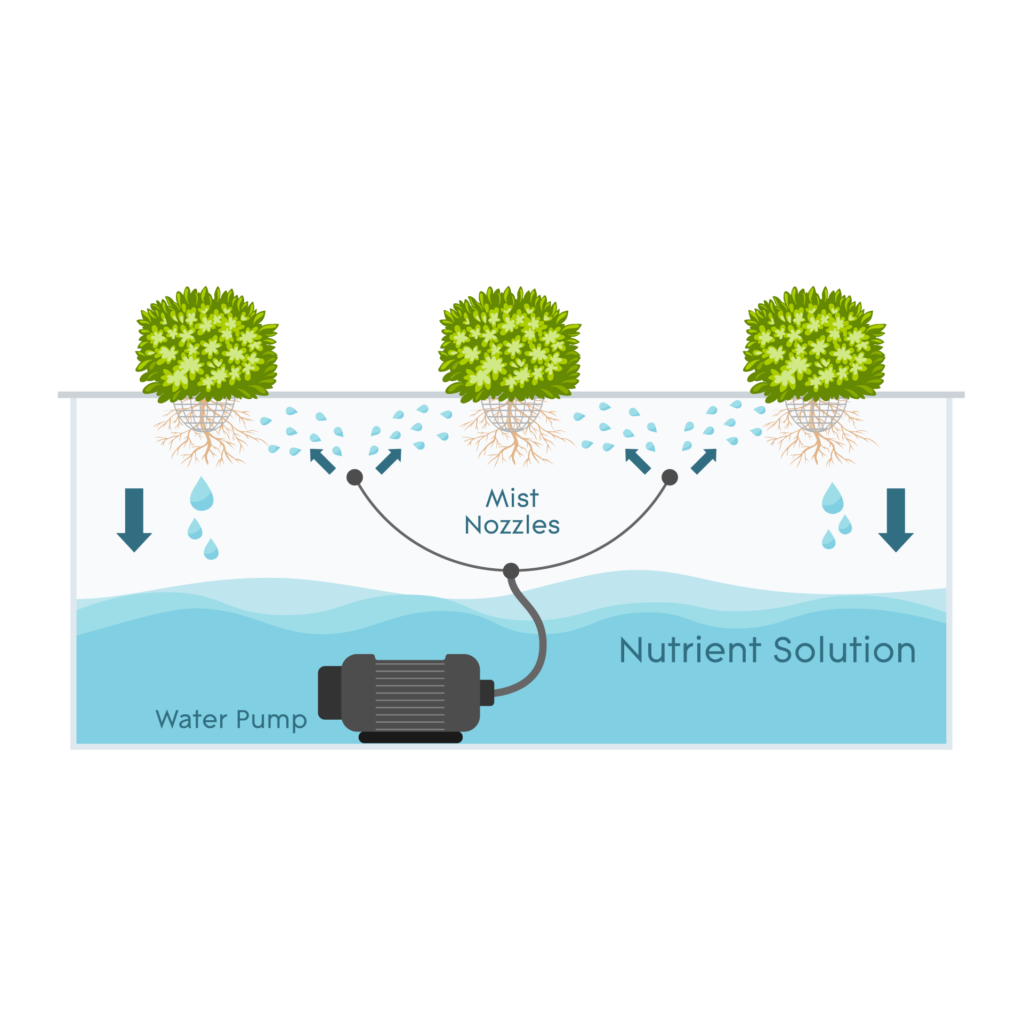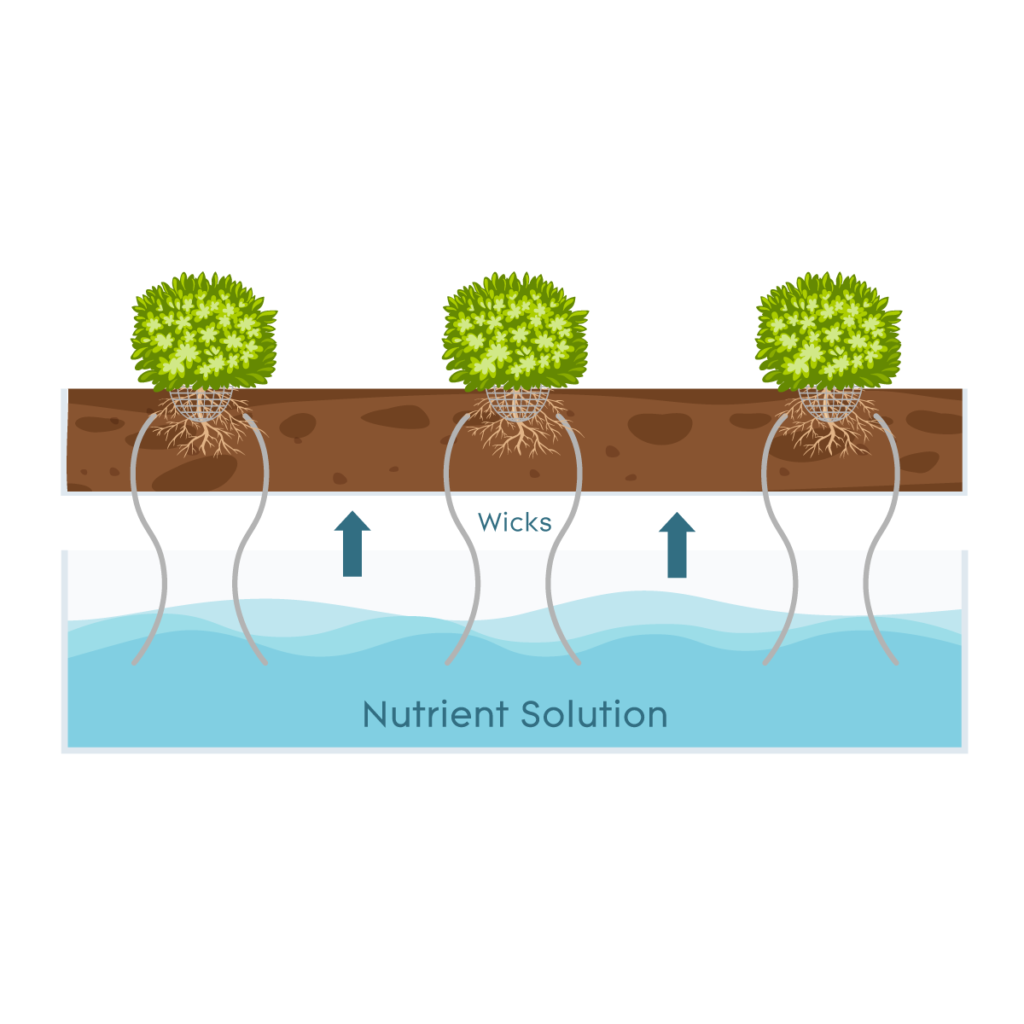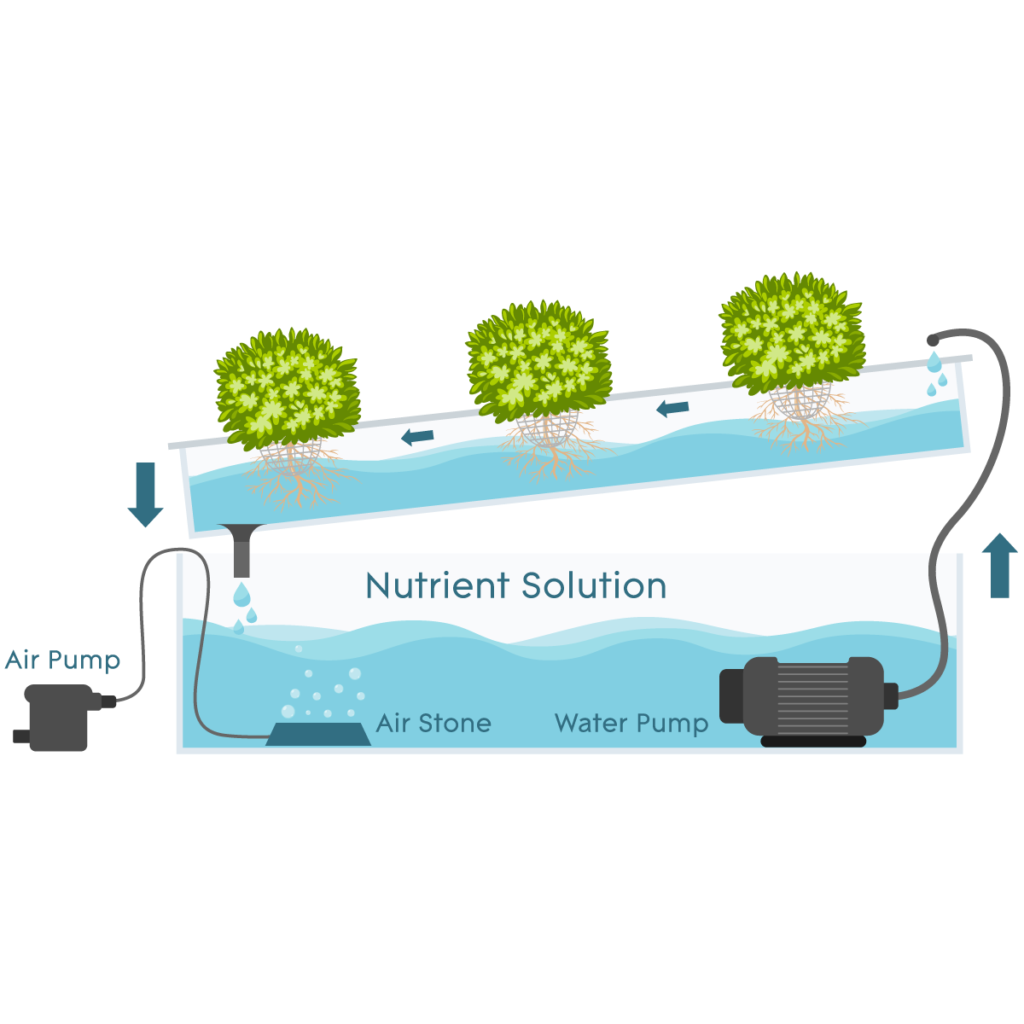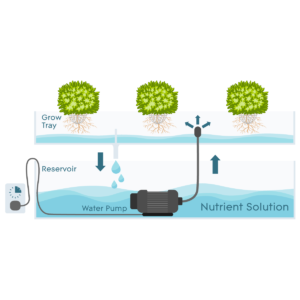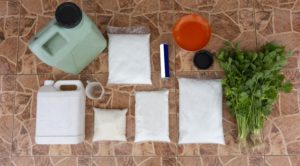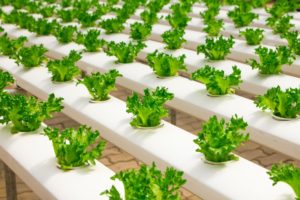An Ebb and Flow hydroponic system is also often called a Flood and Drain system. Much as the name implies, these systems fill with nutrient solution at regular intervals. The nutrient solution then slowly drains away. These systems are quite versatile, and one of the most easily identified hydroponic systems.
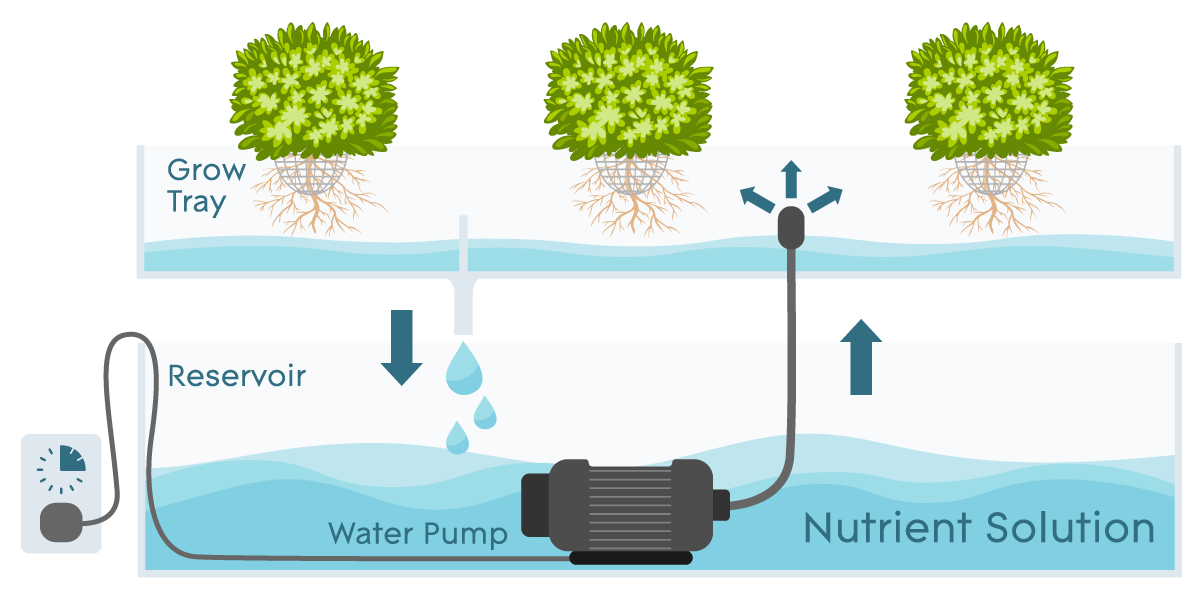
Flood and drain systems include plants in a tray (often called a flood tray), right above a reservoir. A submersible pump goes into the reservoir, to move water out. The pump pushes nutrient solution into the flood tray as it reaches the ‘time’ interval. Within the flood tray, there’s a hole for a drain tube. As the flood tray fills with nutrient solution, the drain tube directs water back into the hydroponic reservoir for reuse at the next flooding. Learn about timing flood cycles here.
Benefits of Ebb and Flow Systems
The benefits of ebb and flow systems include versatility, as they make picking and choosing which plants you’ll grow very easy. They’re also a fairly inexpensive setup. With that in mind, the submersible pump is often the largest cost. These systems are efficient for hydroponic gardeners that prefer reusing nutrient solution and get plenty of oxygen to the root system. While they aren’t incredibly difficult or complex systems, beginners sometimes find the setup intimidating.
You May Also Like…
Common Questions
Will water spill out of the tray during a flood interval?
If it does, that’s a problem. Figuring out your maximum flood height is key. This is something you’ll measure and time before you even put plants in your system. Your max flood height should never be higher than 3/4 of the total height of your flood tray.
How long is a flood cycle?
The ‘flood’ cycle is basically when you feed your plants. Depending on your system and plants, the length of a cycle varies. However, here’s a good rule of thumb: Don’t flood longer than 15 minutes. Remember, the water has to drain away too.
